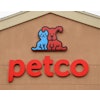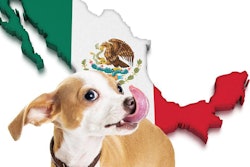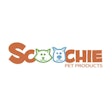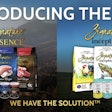
Despite all the changes the past few years have brought, many of the same trends remain dominant in the pet food industry. The intertwined trends of premiumization and humanization grew yet stronger during the lingering COVID-19 pandemic. The move towards e-commerce accelerated while people were stuck at home. Demand for natural ingredients with nutritional value grew. Concern for the health of ecosystems echoed people’s concerns for their own health, along with growing awareness that future pandemic may results from poaching and habitat destruction. Anissa Wolf, research manager for Euromonitor International, discussed these five dominant trends in the pet food industry at Foro Mascotas in Guadalajara, Jalisco, Mexico.
Premiumization – Dog, cat and other pet owners want high-quality, nutritious ingredients in their animals’ food. Premiumization involves giving pets foods made from ingredients people would accept on their own plates.
“Premiumization is the principal factor in the growth of pet food,” Wolf said.
Worldwide in 2017, premium pet food sales stood at US$34.9 billion. By 2027 that could climb to US$59.2 billion.
Premiumization is no longer only for top brands. Private pet food brands have gained credibility and increased their premium offerings, she said.
Humanization – Pet owners likely wouldn’t be moving towards premium pet foods if societal attitudes towards dogs, cats and other animals.
The western hemisphere has the highest self-reported rates of humanization. Wolf presented lifestyle survey data from Euromonitor. The Americas had the highest percentage of people perceiving pets as beloved family members, nearing 80%. North America, meaning Anglo-America, was slightly ahead of Latin America. Europe and Asia-Pacific regions followed, with both in the mid-sixty percentages. In the Middle East and Africa, a bit less than 60% of the respondents considered pets to be family.
Buying habits – Pet food e-commerce was already growing before the pandemic struck. The pandemic altered consumers’ paths to purchase as lock-downs reduced the opportunity to shop in conventional retail channels. Especially among generations younger than 44, digital paths to purchase have grown, though in-store purchases are still the most frequent paths to purchase among all age groups.
Functional/natural ingredients – The health value of pet foods also motivates consumers more than ever now. Euromonitor reviewed the top health-related claims made by pet food brands. High protein was the most common, appearing in nearly 12% of products with claims available online. Natural claims were the second most frequent with more than 8% of products claiming to be natural. Other top claims were related to vitamins, antioxidants, immune system health.
Sustainability – Pet owners are also concerned about maintaining the ability of humanity to provide future generations with the same standard of living that we enjoy. In a Euromonitor survey, pet owners reported higher rates of sustainable behaviors, such as reduced plastic use, meat consumption and food waste, while increasing their purchases of sustainably-produced items and packaging.
















